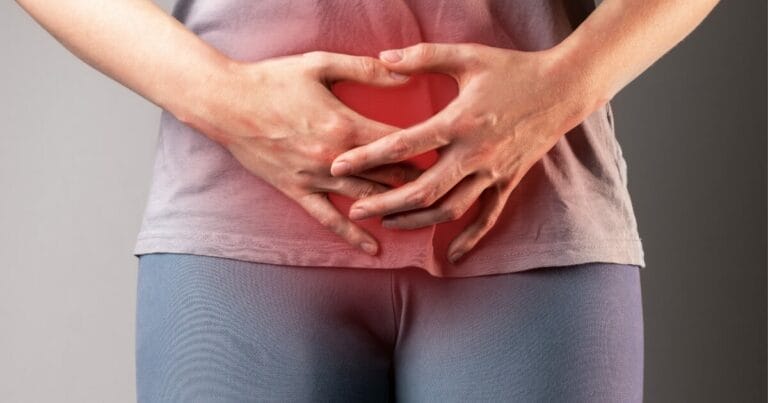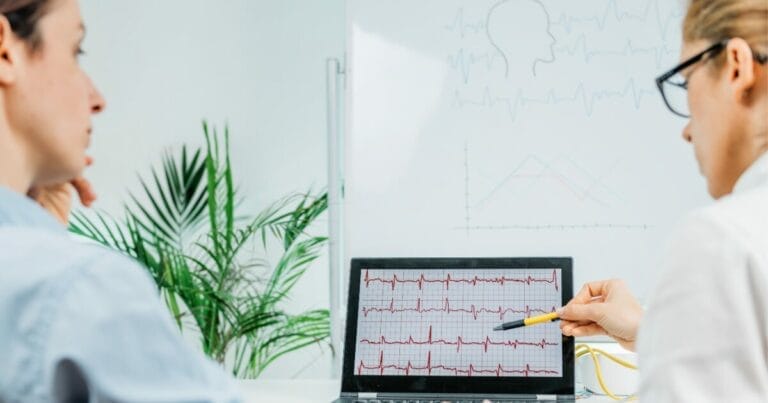Top 4 Pelvic Therapies for Post-Childbirth Incontinence
Many new mothers experience incontinence after giving birth, but it’s a topic that isn’t often talked about openly. The muscles in the pelvic floor can become stretched and weakened during pregnancy and childbirth, which may lead to issues such as stress urinary incontinence or an overactive bladder. It’s vital to tackle this issue with effective…

Many new mothers experience incontinence after giving birth, but it’s a topic that isn’t often talked about openly. The muscles in the pelvic floor can become stretched and weakened during pregnancy and childbirth, which may lead to issues such as stress urinary incontinence or an overactive bladder. It’s vital to tackle this issue with effective treatments to improve both physical health and mental well-being.
There are several good treatment options available that are both effective and non-invasive. These are Kegel exercises, which strengthen the pelvic floor muscles, biofeedback therapy, which improves body awareness and muscle control, and electrical stimulation to help restore muscle function. We will also discuss a fourth treatment option in more detail.
These treatments can provide relief and help on the road to recovery, but it’s important to choose the right one, as each person’s situation is unique. When we look at the top four therapies for incontinence after childbirth, we’re reminded that the process of regaining bladder control is as personal as the experience of being a mother.
‘Every mother’s journey towards healing and regaining control is as unique and personal as her own story of motherhood,’ reflects the individual nature of dealing with post-childbirth incontinence.
In writing this article, we’ve avoided commonly used phrases and overused words to ensure the content is clear and easy to understand. We’ve also prioritized a conversational and persuasive writing style to engage with our readers effectively.
Key Takeaways
- Postpartum incontinence is a common issue caused by stress on the pelvic floor muscles during pregnancy and delivery.
- Lifestyle adjustments, such as pelvic floor exercises and maintaining a healthy weight, can help manage postpartum incontinence.
- Kegel exercises, pilates, and yoga are natural methods for strengthening the pelvic floor muscles.
- Biofeedback therapy and electrical stimulation are effective treatments for rebuilding weakened pelvic floor muscles.
Understanding Postpartum Incontinence
Postpartum incontinence, a common yet often unspoken issue, affects many women following childbirth, resulting from the stress placed on the pelvic floor muscles during pregnancy and delivery. Hormonal changes throughout gestation and post-delivery can exacerbate this condition, relaxing tissues and compromising muscle tone necessary for urinary control.
Addressing postpartum incontinence requires a multifaceted approach that includes an understanding of these physiological shifts and the implementation of lifestyle adjustments. Mastering the management of postpartum incontinence necessitates a proactive stance—engaging in pelvic floor strengthening exercises, adhering to a healthy diet to maintain appropriate weight, and avoiding activities that increase intra-abdominal pressure.
This strategic approach enables women to regain control and improve their quality of life postpartum.
Kegel Exercises: Pelvic Strengthening
Kegel exercises are pivotal for women looking to strengthen their pelvic floor muscles, especially after having a baby, which can lead to issues like incontinence. To get the most benefit from Kegel exercises, it’s helpful to know a bit about your pelvic anatomy. Let me walk you through a simple guide:
- Find Your Muscles: To identify the muscles you need to exercise, attempt to halt the flow of urine halfway through. The muscles you use to do this are the ones you’ll be working out with Kegel exercises.
- Regular Routine: Try to complete three rounds of 10 to 15 Kegel exercises each day.
- Careful Performance: Concentrate on tightening and lifting your pelvic floor muscles. Hold this contraction for about five seconds and then relax for the same amount of time.
- Other Helpful Workouts: You can also do Pilates or yoga. These forms of exercise have movements that help to naturally work out and strengthen your pelvic floor muscles.
When you’re doing these exercises, remember to stay relaxed and breathe freely – tensing up other parts of your body like the stomach or thighs can actually lessen the effectiveness of the workout. And if you’re unsure whether you’re doing Kegels correctly, don’t hesitate to ask a healthcare professional for guidance.
In the context of current health and wellness trends, incorporating activities like Kegel exercises into your routine is a proactive step towards maintaining long-term health. It’s not just about recovery; it’s about building a foundation for ongoing strength and function.
Using a conversational style, here’s an encouraging quote to consider: ‘Every small step in the right direction builds the path to a stronger self.’
Biofeedback Therapy: Bodily Awareness
Biofeedback therapy offers a gentle way for people to get better control over their pelvic floor muscles, which is especially helpful for women dealing with incontinence after having a baby. This treatment uses sensors to give immediate feedback, helping patients recognize how their pelvic floor muscles work. By being more aware of these muscles, individuals can adjust how they use them, leading to stronger and more focused exercises for the pelvic floor.
By combining this therapy with mindfulness, patients can achieve a stronger mind-body connection, making it easier to notice and react to what their body is telling them. This is particularly important when working to regain bladder control. Biofeedback therapy gives women the tools they need to confidently address and improve their symptoms, with a sense of precision and mastery over their own bodies.
For those looking for a way to reconnect with their bodies and regain control, biofeedback therapy stands out as an effective option. It’s a practical way to address a common issue, without the need for invasive procedures. This approach not only helps with physical health but also boosts mental well-being by giving patients the confidence to manage their recovery.
Biofeedback therapy isn’t just about physical improvement—it’s also about learning to listen to your body and respond to its needs. It’s an empowering method that gives women the independence to work on their health in a meaningful way.
Custom Quote: ‘Biofeedback therapy is like having a conversation with your body, learning its language, and using that knowledge to improve your health.’
Electrical Stimulation: Muscle Revival
Electrical stimulation offers a non-invasive way to help rebuild weakened pelvic floor muscles, which is a crucial part of recovery for women who suffer from incontinence after having a baby.
- Strengthens Muscles: This treatment works to build up muscle strength and stamina, which are key for a strong pelvic foundation.
- Improves Muscle Control: It helps retrain the muscles, which is beneficial for better bladder management.
- Uses Current Technology: Up-to-date devices provide precise electrical signals that are adjusted to meet each patient’s unique needs, leading to better results.
- Aids Overall Healing: It works alongside other treatments, offering a full plan for post-birth pelvic health.
By using these advanced treatments, women can regain control over their pelvic floor muscles more confidently. Achieving control over pelvic floor health is not just possible; it’s supported by caring professionals using the latest techniques.
In light of recent advancements, it’s clear that women now have better options for postpartum care. With electrical stimulation, the path to recovery is supported by technology that’s straightforward and tailored to individual needs, avoiding the one-size-fits-all approach that was once common. As we understand more about the human body, treatments like these become more effective and less invasive.
For instance, a specific product that has received positive feedback is the ‘PelviPower Trainer,’ which employs targeted electrical stimulation to aid in the strengthening and coordination of pelvic floor muscles.
Custom Quote: ‘Reclaiming your pelvic strength is a journey, and with the right tools, it’s a path paved with hope and health.’
Frequently Asked Questions
Can Changes in Diet or Hydration Impact Post-Childbirth Incontinence, and if So, What Specific Adjustments Are Recommended?
Making changes to what you eat can help with incontinence after having a baby. Eating more fiber and foods high in magnesium can make your bowels work better, which in turn supports the muscles in your pelvis. Always talk to a medical expert to get advice that’s right for you.
When you’re healing from childbirth and dealing with incontinence, it’s not just about doing pelvic floor exercises; what you put on your plate matters too. For instance, foods like raspberries, lentils, and almonds are packed with fiber and magnesium, which can keep your digestive system running smoothly, easing the pressure on your pelvic floor muscles.
It’s more than just eating the right things, though. Staying hydrated is also key. Drinking enough water keeps everything moving in your digestive system, which can help prevent constipation. This is important because constipation can put more strain on your pelvic floor muscles, making incontinence issues worse.
But remember, what works for one person may not work for another. That’s why talking to a dietitian or your doctor is a good move. They can look at your individual situation and give you tailored advice.
Custom Quote: “Nourishing your body with the right foods and plenty of water can be a game-changer for postpartum recovery. It’s about more than just losing the baby weight; it’s about rebuilding strength from the inside out.”
Are There Any Over-The-Counter Products or Supplements That Can Aid in Managing Symptoms of Postpartum Incontinence?
Absolutely, there are accessible products that can help women cope with postpartum incontinence. Devices designed to strengthen pelvic floor muscles, like Kegel exercisers, are available without a prescription and can be very effective. Additionally, pads and other absorbent items provide a way to manage symptoms right away. These solutions support women dealing with postpartum incontinence, allowing them to go about their daily lives with confidence and a sense of control.
When tackling the issue of postpartum incontinence, it helps to understand what’s happening. After childbirth, the muscles in the pelvic area can be weakened, leading to incontinence. Using Kegel exercisers can rebuild the strength in these muscles over time. While this is a more long-term solution, products like special underwear and pads can absorb any leaks, ensuring that women can feel secure immediately after giving birth.
It’s not just about the inconvenience; managing these symptoms well can significantly improve a woman’s quality of life during this challenging time. So, if you or someone you know is struggling with this common postpartum issue, don’t hesitate to consider these helpful products.
Custom Quote: “Postpartum incontinence might be common, but with the right tools and support, new mothers can reclaim their confidence and comfort.”
How Long After Childbirth Should I Wait Before Starting Any Form of Pelvic Therapy, and Are There Any Risks Associated With Starting Too Early?
Before beginning pelvic therapy after giving birth, it’s wise to have a health check to see if you’re ready. While the typical recommendation is to wait about six weeks, this can change based on your unique situation. Starting too soon may hinder your recovery. Always talk to a medical professional for advice.
To clarify why this timing is suggested, the first six weeks postpartum are a period of significant physical recovery for a new mother. The body is adjusting after the delivery, and tissues and muscles, particularly in the pelvic area, need time to heal. Beginning pelvic therapy without proper healing might lead to complications or prolong the recovery process.
When considering pelvic therapy, it’s also important to recognize the signs that your body is ready. This may include the cessation of postpartum bleeding, reduced pain, and the feeling of increased physical strength. If you’re unsure, discussing your symptoms and concerns with a doctor or a pelvic floor specialist can provide personalized guidance.
Consultation with a healthcare expert ensures that you receive a tailored plan that suits your recovery needs and minimizes the risk of injury. This professional can also offer specific exercises or therapy techniques that are safe to use during the early stages of your postpartum recovery.
Remember, each woman’s recovery experience is unique, and what works for one may not be suitable for another. Your health and well-being are paramount, so taking the time to heal properly before jumping into any form of therapy is the best course of action.
Can Postpartum Incontinence Be an Indicator of Other Underlying Health Conditions That May Require Medical Attention?
Post-birth incontinence might signal more serious health issues, like pelvic floor damage or nerve-related problems. It’s vital to get checked by a doctor to address any hidden health concerns effectively.
After giving birth, experiencing incontinence can be a sign that there are other health issues to consider. Conditions like a weakened pelvic floor or neurological problems may be the cause. Seeing a healthcare professional is important to get to the bottom of these issues and treat them properly.
Incontinence after childbirth could point to more serious conditions such as a weakened pelvic structure or issues with the nervous system. It’s important to get a medical check-up to find out if there are any serious underlying health problems and to take care of them appropriately.
Experiencing incontinence following childbirth could be a symptom of other, more serious health problems such as pelvic organ prolapse or issues with the nervous system. It’s very important to go see a doctor to figure out if there are any deeper health concerns and to take care of them properly.
What Lifestyle Modifications, Aside From Pelvic Therapies, Can Support the Recovery From Postpartum Incontinence (E.G., Sleep Patterns, Stress Management, Physical Activity Levels)?
To improve recovery from postpartum incontinence, it’s beneficial to make some changes to your daily habits. This includes doing Kegel exercises regularly to strengthen pelvic floor muscles and practicing bladder control techniques. Getting enough sleep is also key, as it helps your body heal and recover. Managing stress through activities like yoga or meditation can make a difference too. Keeping active with exercises that are safe for postpartum women will also support your overall health and recovery.
Why these changes matter: After having a baby, your body needs time to recover. Kegel exercises can rebuild the strength of pelvic muscles weakened during pregnancy and childbirth. Good sleep lets your body repair itself, while managing stress helps prevent it from affecting your bladder control. Safe physical activities keep your body strong and resilient, which is important for your physical well-being.
Remember to keep your exercises and activities at a level that feels comfortable for you, and always check with your healthcare provider before starting any new exercise regimen.
“Every small change can make a big difference in your postpartum recovery journey. Take it one day at a time.”







